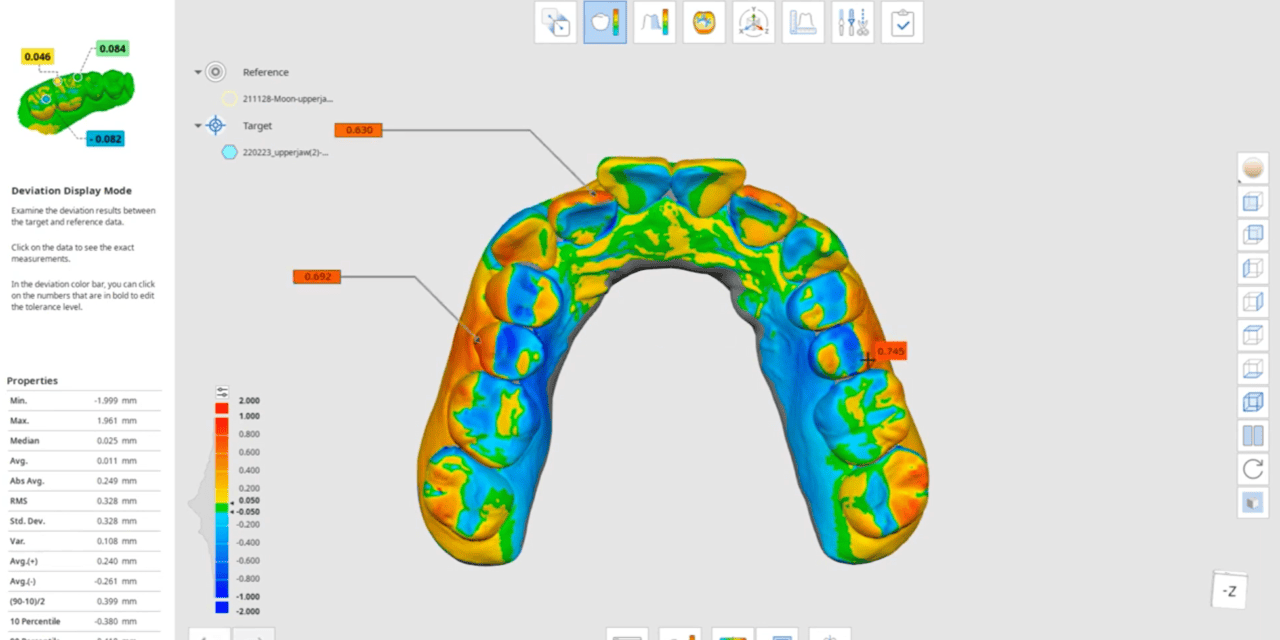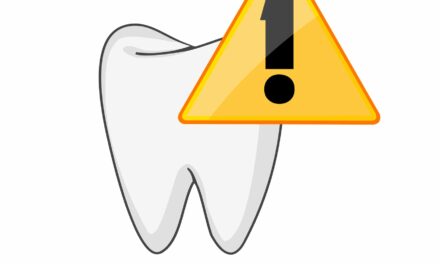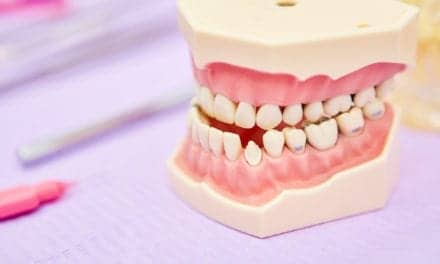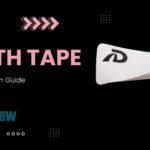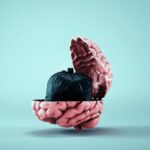As more dentists use intraoral scanning to take impressions for oral appliances for obstructive sleep apnea, manufacturers add features that quantify bite changes.
By Anthony T. Dioguardi, DMD, DABDSM
For years, restorative dentists and orthodontists have harnessed useful features of intraoral scanners to perform tasks such as marking crown preparation margins, matching shades, and filtering out red blood.
As more dentists use intraoral scanners to take impressions for oral appliances for obstructive sleep apnea, the industry is taking notice. Michael Hearn, customer experience specialist at oral appliance marketer Dynaflex, estimates that 70% of dentists providing oral appliances now send scanned images, compared to less than 50% just five years ago—a shift largely driven by the cost savings, reduced turnaround times, and better-fitting appliances, according to Hearn.
Dental sleep medicine practitioners have the unique need to record an open protrusive bite position and monitor its changes. Intraoral scanner marketers have responded by launching digital tools to compare patients’ bites at each oral appliance follow-up visit.
Oral Appliances Can Cause Bite Changes

Failure to discuss and document potential side effects in the informed consent before treatment is initiated can lead to serious legal liability for the prescribing dentist.
Unwanted bite changes are unfortunately a potential side effect that may present a unique challenge in oral appliance therapy. These changes can worsen with time, the degree of protrusive appliance setting, and increased use of an appliance.
Changes may include posterior open bite, facial tipping of the lower incisors, open contacts, and bodily movement of the teeth in both arches. Often these changes occur despite a dentist’s best efforts to adjust appliances to the minimum protrusive position, emphasize morning exercises, and provide patients with repositioning splints.
Oral appliance therapy requires a commitment to follow patients for as long as they are wearing their appliances. The clinical practice guideline states that “qualified dentists provide continued oversight—rather than no follow-up—of oral appliance therapy in adult patients with obstructive sleep apnea, to survey for dental-related side effects or occlusal changes and reduce their incidence.”1
Quantifying Bite Changes

Monitoring bite changes during oral appliance therapy is typically done with photographs, measurements, plaster models, or simply eyeballing the differences.
Modern intraoral scanning software now enables dentists to precisely and objectively observe and document bite changes. The downside is this method requires follow-up intraoral scans that otherwise would not be done. Still, even with a second scan, intraoral scanner bite compare features can save time compared to manually measuring different landmarks every six months.
Both intraoral scanners I use, made by manufacturers Dexis and Medit, have added a bite change comparison feature.
Dexis calls its Oral Compare, and it provides graphic and numeric representations of any bite changes. “This new feature in IS ScanFlow allows you to clearly visualize occlusal changes and progressive dental issues like erosion, wear, and recession over time,” Dexis announced earlier this year.
At Medit, the Discrepancy tool is a feature within the free Medit Design app. Matt Mock, Medit’s senior director of marketing and education, says, “You can use it to track changes in dentition, but you can also export and compare multiple bites from different appointments by loading those bite files into Medit Design. Medit also allows for you to take an unlimited number of bites, and each one is recorded as a file that can be exported into Medit Design or any other design software for analysis.”
Outcomes for Patients on Oral Appliance Therapy

 Screen capture of Dexis Oral Compare
Screen capture of Dexis Oral CompareIntraoral scanning bite comparison tools provide a qualified dentist with better tools to serve patients. Fortunately, in most cases when minor bite changes occur as a result of oral appliance therapy, they are well tolerated by patients and present as a finding rather than a problem.
Technological advances can provide a qualified practitioner with better tools to serve their patients. But any technology is only as good as the experience and knowledge of the person operating it. When a fan once complimented master guitarist Chet Atkins on how great his guitar sounded, he wisely responded by leaning it against a chair, stepping back, and asking, “How does it sound now?” In the same way, new features of intraoral appliances are no substitute for the many hours of learning and experience necessary to produce positive clinical outcomes for people who need obstructive sleep apnea therapy.
Images: For quick viewing, both Medit (1st and 2nd screenshot) and Dexis (3rd and 4th screenshot) illustrate the deviation between two scans by using a continuum of warm and cold colors, representing the direction of change and intensity of chroma representing absolute value of the movement. In addition, specific millimeter measurements are displayed through any chosen plane.
Reference
- Ramar K, Dort LC, Katz SG, et al. Clinical practice guideline for the treatment of obstructive sleep apnea and snoring with oral appliance therapy: an update for 2015. J Clin Sleep Med. 2015 Jul 15;11(7):773-827.

